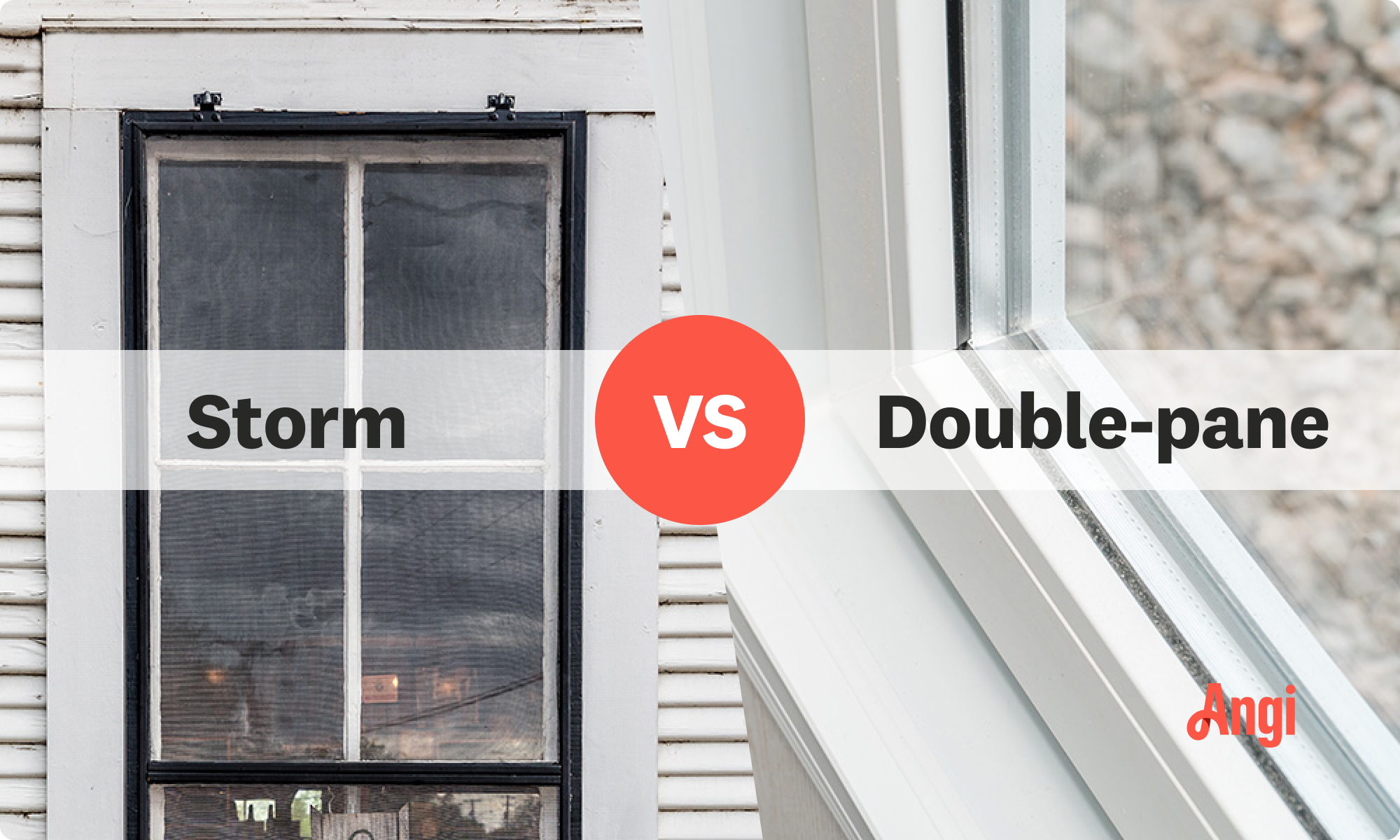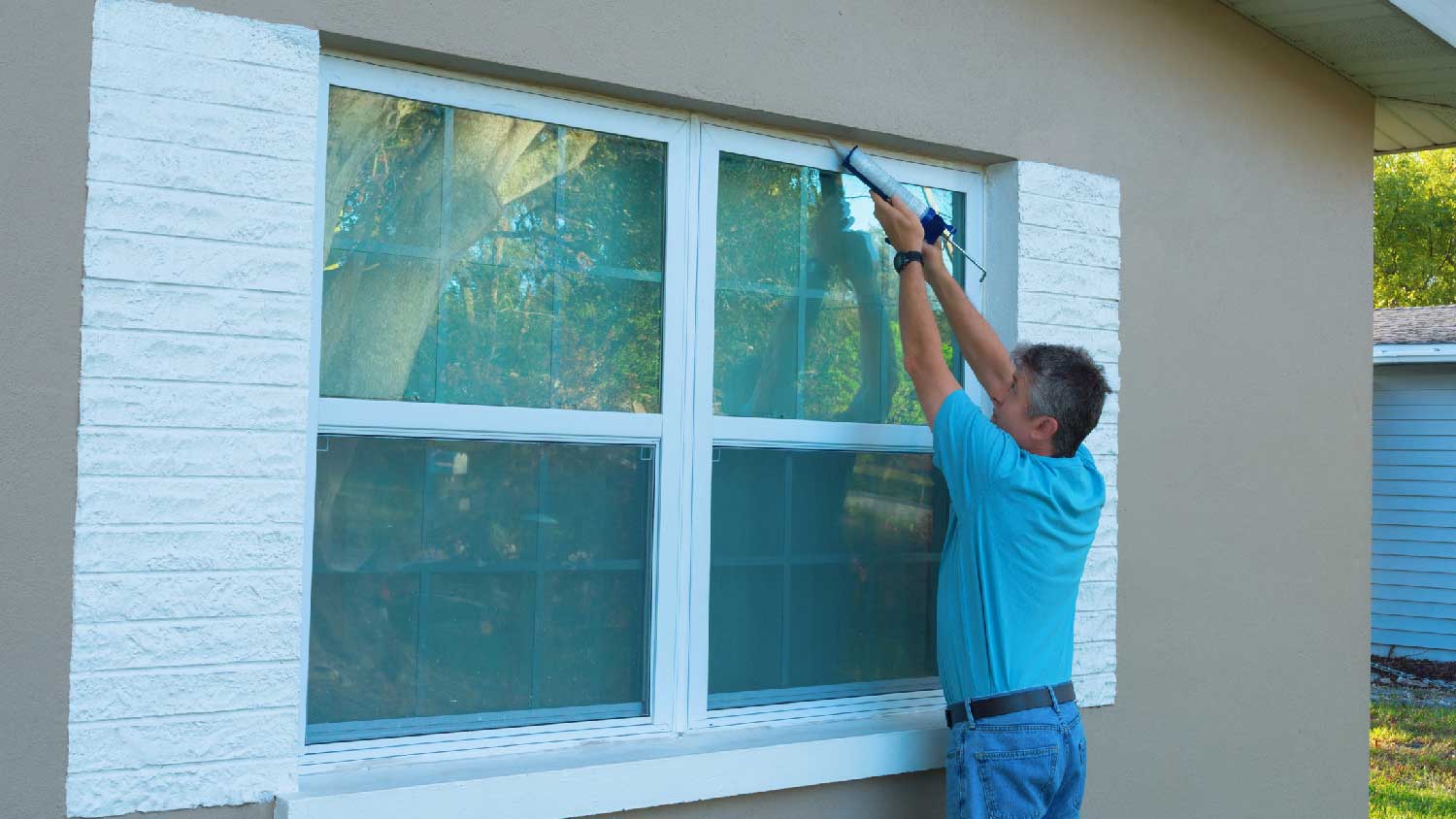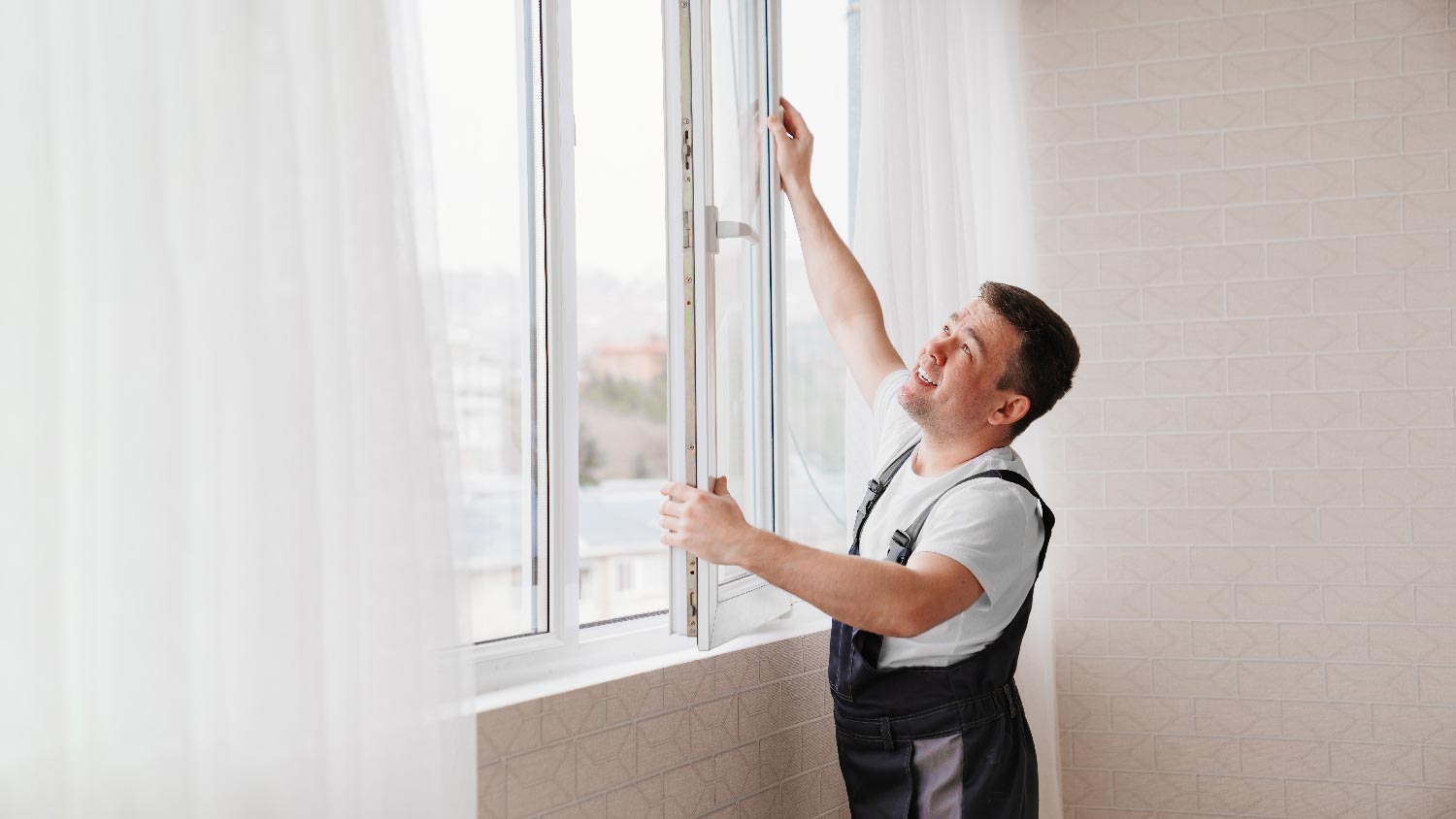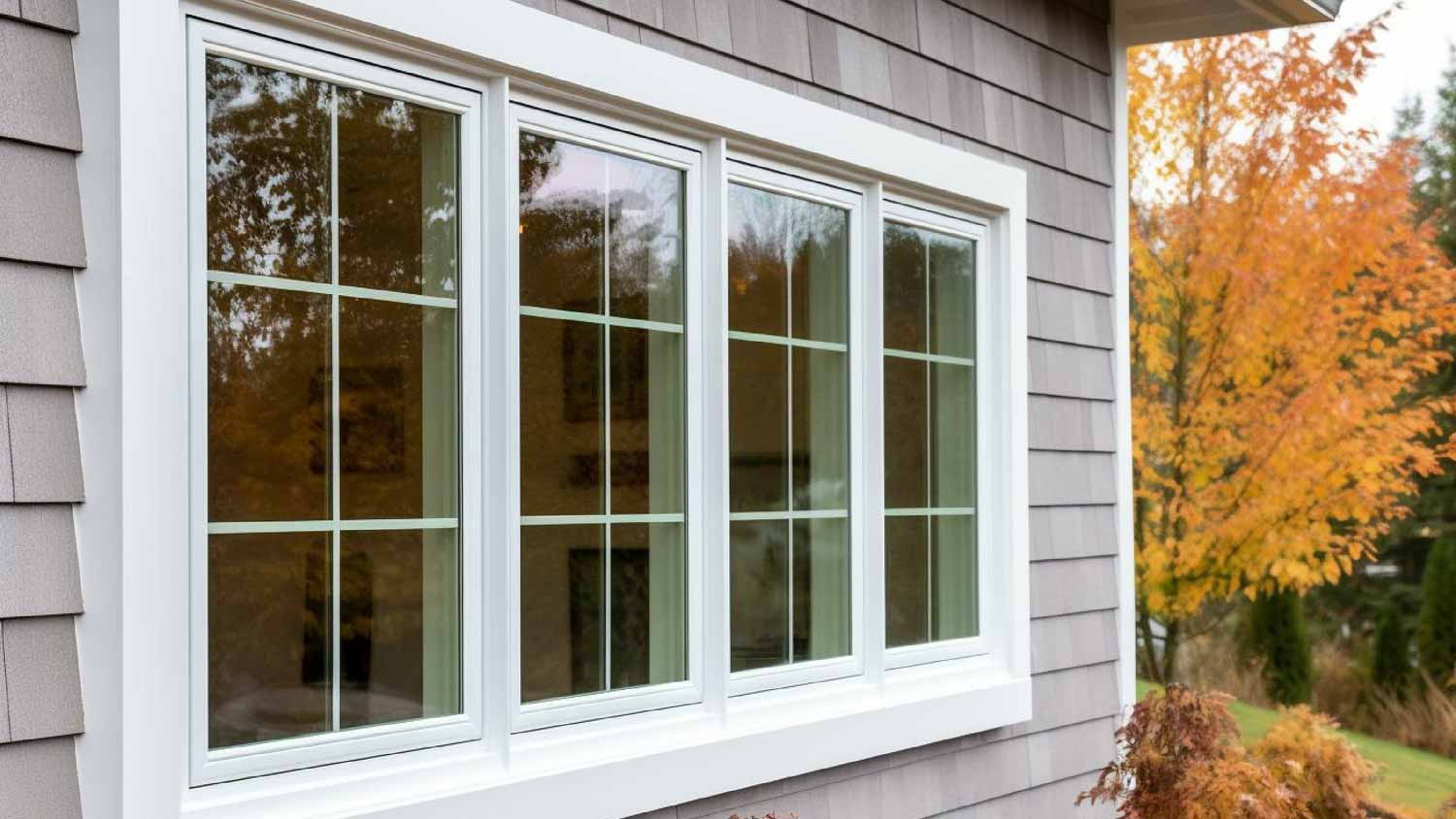Storm Windows vs. Double Pane: What’s the Difference?
Get rid of drafts and save some dough in this window head-to-head


Double-pane windows replace existing windows to improve energy efficiency.
Double-pane windows cost more and are more expensive to install than storm windows.
Storm windows cover existing windows to add protection from weather.
You can install storm windows on the interior or exterior of the home.
Window upgrades can stop drafts and increase your home’s resale value. We put storm windows and double-pane windows to the test to compare replacing windows or adding a layer of protection. While these two types of windows have similar benefits, their differences can make one a better choice for your home based on the home’s age, your budget, and the climate. Read on to learn more about the pros and cons of storm windows versus double pane.
Storm Windows vs. Double Pane: Key Differences

You can install storm windows on the interior or exterior of existing windows. If you install them over single-pane windows, you can increase your energy efficiency and protect the existing windows from the elements.
In comparison, double-pane windows replace existing windows. They consist of two panes of glass with a sealed chamber between them that can contain air or gas, like krypton or argon, to improve insulation.
What Are Storm Windows?

Storm windows, also known as impact-resistant windows, mount to the exterior or interior of existing single-pane windows. These windows add a layer of protection from the elements while improving insulation. Interior storm windows fit into the existing window frame and aren’t visible from the home’s exterior. There are various types of exterior storm windows, including two- and three-track designs and basement storm windows.
| Pros | Cons |
|---|---|
| Easy to install and doesn’t damage the existing window | Some designs prevent opening the window |
| Budget-friendly and low-maintenance | Interior storm windows don’t provide protection from the elements |
| Prevent heat loss for better energy efficiency | Frame material (aluminum, vinyl, or wood) can affect energy efficiency |
| Additional moisture barrier | Most models prevent opening windows for ventilation |
| High return on investment |
Best for:
Homes with single-pane windows
Projects on a smaller budget
Homes in harsh climates
Multi-story homes
Pros of Storm Windows
Storm windows offer many benefits. They’re easy to install, with interior windows popping into the existing frame and staying in place using magnetic force or a compression seal. Exterior storm windows take more work but are still relatively simple to attach to the window frame. Additionally, interior storm windows are an excellent option for multi-story homes because you don’t have to get on the roof to install them.
Storm windows are affordable and low maintenance compared to other window upgrades. Storm window costs vary by type, but as far as maintenance, all you need to do is wash them occasionally to keep them looking clean and clear. Most people pop interior storm windows in and out to wipe down both sides.
Both exterior and interior storm windows prevent energy loss. Interior windows are more effective at this since exterior storm windows have ventilation holes to prevent moisture buildup, which reduces their insulating benefits. Keep in mind that the added temperature regulation offered by storm windows will only improve insulation and energy efficiency for single-pane windows. However, storm windows aren’t necessary with double- and triple-pane windows since they’re already highly energy efficient.
An added window layer also prevents excess moisture from entering the home, and exterior storm windows can protect your windows from rain, wind, and snow.
Finally, storm windows are an excellent return on your investment. You can expect an 80% return on investment (ROI) on storm windows. The ROI may be even higher if you live in an area with extreme weather.
Cons of Storm Windows
Storm windows have some downsides. Most models prevent you from opening your windows for ventilation. You may choose to remove the storm windows during certain seasons so you can open your windows. Contact a local window and door contractor to find out the best type of storm window for your home and seasonal ventilation needs. Interior storm windows, while easier to install and remove, don’t offer protection from inclement weather.
The frame material will affect the effectiveness of your storm windows, including aluminum, vinyl, and wood. Aluminum frames can get warm in the sun, making them less energy efficient. Wood frames are the most attractive option, but they’re heavy and can be more challenging to install. Wood can also weather over time as it expands and contracts in changing temperatures.
What Are Double-Pane Windows?

Double-pane windows consist of two panes of glass in a single frame, with air or gas sealed between the panes to help regulate interior temperature. Instead of adding a layer to existing windows, they replace them. The frames are made of vinyl, wood, composite, fiberglass, or steel, giving you some options to help the windows blend in with your home’s exterior design. These windows improve energy efficiency and increase the value of your home.
| Pros | Cons |
|---|---|
| Energy-efficient and prevent heat loss | More expensive |
| Energy savings on heating and cooling costs | Not as energy efficient unless all windows are replaced |
| Improve sound insulation | |
| High return on investment |
Best for:
Projects with a bigger budget to replace all the windows in the home
Those who want to improve energy efficiency and save money on heating and cooling costs over time
Pros of Double-Pane Windows
Double-pane windows are made with varying technologies, from the frame to the glass and the gases used between the panes. Thanks to technological advances, many of today’s double-pane windows are more energy-efficient than those used only a decade ago.
The double-layered glass and the air or gas barrier between panes help reduce heat exchange for a warmer or cooler interior based on your comfort preferences. Less heat exchanged (moving between your home and the outdoors) keeps indoor temperatures consistent, saving energy and money on heating and cooling costs.
The more layers sound waves pass through, the slower they become. Consequently, these two-layer windows also act as an extra sound barrier, too.
Finally, double-pane windows offer an excellent ROI. Depending on the type of window and size, they can cost anywhere from $300 to $2,100 per window. However, homeowners can see a 68% ROI, which is handy if you want to sell your home.
Cons of Double-Pane Windows
This type of window is more expensive than single-pane and storm windows. Double-pane installation costs are also higher because they require removing and disposing of the old windows and installation costs.
Additionally, to fully enjoy the energy-saving and sound-reducing advantages, you need to replace most (if not all) of the windows in the home. You won’t get the full benefit of increased energy efficiency until you replace all of the windows (versus replacing them one by one over time).
Storm Windows vs. Double Pane

Your climate, budget, and the status of your existing windows should all influence whether storm or double-pane windows are the right choice for you. We put them side by side in specific categories to find the winner in each category.
Appearance: Double-Pane Windows
Double-pane windows come in a broader range of frame materials to accentuate your home’s exterior. Some storm windows can be nearly indistinguishable from standard windows, but others can reduce visibility or might not accentuate the home design as well as double-pane windows.
Durability: Double-Pane Windows
Double-pane windows can last 30 to 40 years, while storm windows can last 20 to 30 years. The climate also affects the life span of the windows. If you live in a climate with severe weather, your windows, especially storm windows, won’t last as long as windows in a home in a mild climate.
Price: Storm Windows
While prices vary, storm windows are less expensive to buy and install than double-pane windows. For example, aluminum storm windows can cost between $90 to $275 per window. In contrast, aluminum double-pane windows cost between $200 to $700 per window.
Ease of Installation: Storm Windows
Storm windows come out on top because double-pane windows require completely new window installation, whereas a storm window is installed over an existing window. However, the difficulty of storm window installation can vary. Interior storm windows are easier to install than exterior ones. Consider hiring a local window contractor to install storm windows, especially on multi-story homes.
Maintenance: Tie
Both storm and double-pane windows need regular cleaning once or twice a year, and that’s about it. Interior storm windows offer the easiest maintenance because you can pop them out for cleaning.
ROI: Storm Windows
Both storm windows and double-pane windows offer an ROI. However, storm windows beat out double-pane windows mostly because they don’t cost as much in the first place, and they can last almost as long. You can expect around an 80% ROI for storm windows versus a 68% ROI for double-pane windows.





- What Is a Storm Window? Different Types, Pros and Cons, and More
- Single-Pane vs. Double-Pane vs. Triple-Pane Windows: Which Is Best for Your Home?
- Who to Call for Storm Window Installation
- Thermal Pane Windows 101: Everything You Need to Know
- Types of Old Windows and When to Replace Them
- Why Do My New Windows Let in Too Much Noise?
- When to Replace Windows: 10 Signs That It’s Time to Start Shopping
- How to Choose the Best Replacement Windows for Old Houses
- Do New Windows Increase Home Value? This Home Improvement Could Be Well Worth It
- 15 Types of Windows and How to Choose the Right Ones










